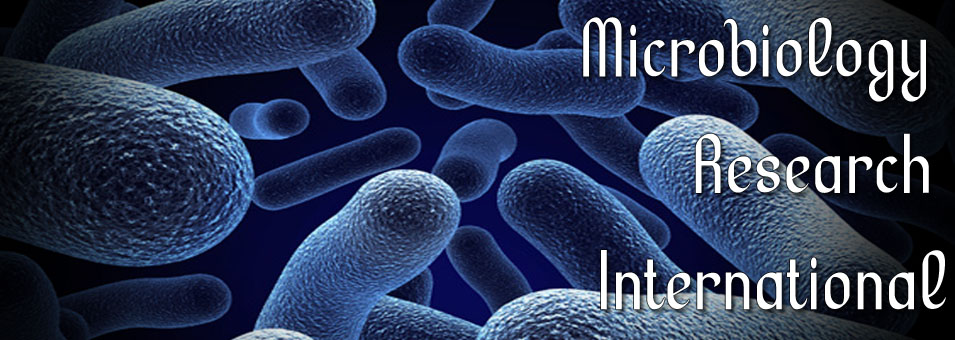Prevalence and antimicrobial resistance pattern of Escherichia coli in drinking waters in Jalingo Metropolis, Taraba State, North-Eastern Nigeria
G. A. Umaru, Z. Adamu, D. Ishaya, Y. U. Abubakar, A. Hussaini, M. Umar, S. G. Adamu and N. B. AdamuMicrobiology Research International
Published: February 11 2015
Volume 3, Issue 1
Pages 8-13
Abstract
Fecal coliforms and Escherichia coli are bacteria that inhabit the human or animal intestinal tracts, therefore associated with human or animal wastes. Their presence in drinking water is a strong indication of sewage or human/animal wastes contamination and determines the safety/quality of the water. When these waters are used as sources of drinking waters without treatment or inadequate treatment, these bacteria may end up in drinking waters and causes diarrheal related infections. In an attempt to determine the occurrence of E. coli in drinking waters in Jalingo Metropolis, Taraba State, North-eastern Nigeria, 300 water samples comprised of well, bottled, sachet and waters from commercial water vendors (popularly called "Yan-Garuwa") were analyzed. The results show that 28 (9.3%) E. coli were isolated with well waters having the highest isolation rate of 15/80 (18.5%) followed by Yan-Garuwa, 8/80 (10.0%) and sachet waters, 5/60 (8.3) (P < 0.05). No E. coli was isolated from both borehole and bottled waters analyzed. The antimicrobial resistance and susceptibility patterns of the 28 E. coli show high resistance to ampicillin (100%), penicillin (100%) tetracycline (78.6%), and erythromycin (71.4%). However, low resistance was recorded against streptomycin (28.6%) and ciprofloxacin (17.9%), respectively. On the other hand, the highest susceptibility was observed with gentamicin, chloramphenicol and Nalidixic acid with 28 (100.0%), 23 (82.1) and 25 (89.7), respectively. The study recommends disinfection and proper hygienic measures during preparation and handling of water and also proper construction of wells to avoid run-off of sewage during rain.
Keywords: Prevalence, antimicrobial resistance, Escherichia coli, drinking waters, sewage.
Full Text PDF
